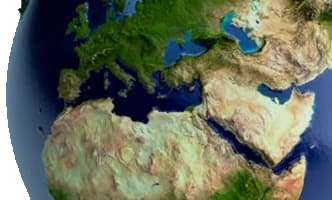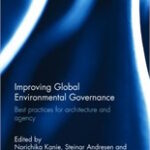The next major global environmental conference will occur in June 2012, with the uninspiring name of the UN Conference on Sustainable Development, or Rio Plus 20. It is aimed at promoting the shift to a green economy. After the first preliminary prepcom meetings (16-18 May 2010 in NY, 7-8 March in NY), the first intersessional (10-11 January 2011 in NY) and the failed UNCSD meeting in May 2011, discussions have been quite impoverished in terms of imagination and passion.
The formal agenda (http://www.uncsd2012.org/rio20/) while still a bit preliminary, calls for efforts to accelerate the shift to a green economy and institutional reform arrangements. Unfortunately this is a seriously disjointed agenda, as each component appeals to different constituencies, and the combined benefits of the disjointed agenda are modest, at best.
While still a work in progress, the “green economy” appears to encompass cleaner economic production and a low or no carbon economy. It includes both hardware components involving new technologies, as well as software components (or policy components) involving policy changes (such as eliminating market biasing subsidies for polluting technologies). This is a noble prospect of trying to develop the next global large scale socio-economic system, promoting the broader transformative processes of creative destruction analyzed by Schumpeter, Polanyi and scholars of innovation. (Schumpeter 1942; Polanyi 1944; Dosi, Freeman et al. 1988; Nelson 2005)
Promoting green technology requires a massive effort. The International Energy Agency’s (IEA) World Energy Outlook 2009 suggests that a 14% reduction in energy consumption from 2012 Kyoto limits by 2030 is needed to keep atmospheric carbon concentrations at 450 ppm. Such goals are not yet feasible with available technologies, and we still need a massive innovation push to create these green technologies.(Pacala and Socolow 2004; Weizsacker, Hargroves et al. 2009) Recent IPCC estimates suggest that the cost of transitioning to renewables over the next 20 years could run to 15 trillion dollars US. [Financial times 5/10/11, Fiona Harvey “Renewable Energy can power the world, says landmark IPCC study” guardian.co.uk, Monday 9 May 2011.] UNEP suggests the cost would be roughly 2% of GDP per year. While the industrialized North wishes to pursue this goal through technological change and industrial policy, the developing South is more skeptical, and is primarily focused on job creation and ensuring that there are no serious repercussions for their economies from such a major technological shift.
But technological innovation isn’t independent of social change, as Polanyi made clear. Not only does technological change have large scale political consequences, it rests on profound political and social foundations. Technologies are embedded in social structures. (La Porte 1991) Large scale technological change of this magnitude requires a common purpose, political support by a powerful network of actors, and an institutional landscape that reinforces economic forces as well as consolidating the social influence of those associated with the broader project. Previous global conferences such as the 1972 UN Conference on the Human Environment (UNCHE) and the 1992 World Conference on Sustainable Development only succeeded when they were buffered from deeper geopolitical divides (as is the case, now) and resonated with domestic concern in the major powers. (Putnam and Bayne 1987; Willetts 1989; Haas 2002) Even 25 years after the Brundtland Commission Report, Sustainable Development remains more of a vague aspiration than a common project, and does not appear to yet satisfy the second condition.
The institutional part of the Rio Plus 20 agenda remains disconnected from the broad ambitious purpose for the conference. Discussions have revolved around UN restructuring — largely ECOSOC reform and UNCSD reform — that are tired old debates that are unlikely to yield any kind of systemic results.
Institutional reform talks have also focused heavily on UNEP’s future. To some extent this is a matter of the tail wagging the dog, as UNEP is best positioned to work on environmental problems, rather than the broader scope of Sustainable Development and the green economy. Discussions about UNEP’s future have followed a tortuous path for nearly 14 years. At a meeting in Espoo, Finland in November 2010 these ideas for UNEP’s future role in environmental governance were summarized. [UNEP/CGIEG.2/2/2]
- Focus on scientific matters
- Cluster existing MEAs
- Upgrade UNEP to a UN agency (UNEO)
- Streamline UNEP with other bodies (such as UNDP)
- Create a new centralized World Environment Organization (WEO) responsible for all MEAs and able to advocate for environmental protection at WTO
Serious discussions about promoting a green technological transformation need to go well beyond UNEP, and tinkering with existing UN arrangements, to think much more seriously about ambitious new plans to foster political support for what are emerging as good economic policy ideas. UNEP can play a role in the broader constellation of institutions for monitoring environmental quality particularly with an eye to generating early warning signals of loss of resilience, and coordinating scientific assessments of sustainability.
But the core reality is that we need a political realignment to promote creative destruction. Before meaningful support for such large scale changes, and the UN conference can occur, we must stimulate the involvement of organized networks of actors engaged in the green economy project, including Finance, Development and Trade Ministries; as well as a wide variety of non-state actors including clean energy firms, manufacturing, insurance, and investment capitalists. The eventual formal institutions coming out of Rio could help support and disseminate new breakthrough technologies, as well as overseeing or coordinating BEP and BAT sectoral codes.
Without building the social capacity for sustainable development, governments will be unresponsive and policy proposals are likely to go unheard.
References
- Dosi, G., C. Freeman, et al., Eds. (1988). Technical Change and Economic Theory. New York, Columbia University Press.
- Haas, P. (2002). “UN Conferences and Constructivist Governance of the Environment.” Global Governance 8(1): 73-91.
- Nelson, R. R. (2005). Technology Institutions and Economic Growth. Cambidge, Harvard University Press.
- Pacala, S. and R. Socolow (2004). “Stabilization Wedges.” Science 305(5698): 968-972.
- Polanyi, K. (1944). The Great Transformation. New York, Farrar & Rinehart.
- Putnam, R. D. and N. Bayne (1987). Hanging Together. Cambridge, Harvard University Press.
- Schumpeter, J. (1942). Capitalism, Socialism and Democracy. New York, Harper and Row.
- Weizsacker, E. v., K. Hargroves, et al. (2009). Factor Five: Transforming the Global Economy through 80% Improvements in Resource Productivity. London, Earthscan.
- Willetts, P. (1989). The Pattern of Conferences. Global Issues in the United Nations’ Framework. P. Taylor and A. J. R. Groom. New York, St Martin’s Press.
About the author

Peter M. Haas
Professor of Political Science, University of Massachusetts Amherst, Department of Political Science, USA



